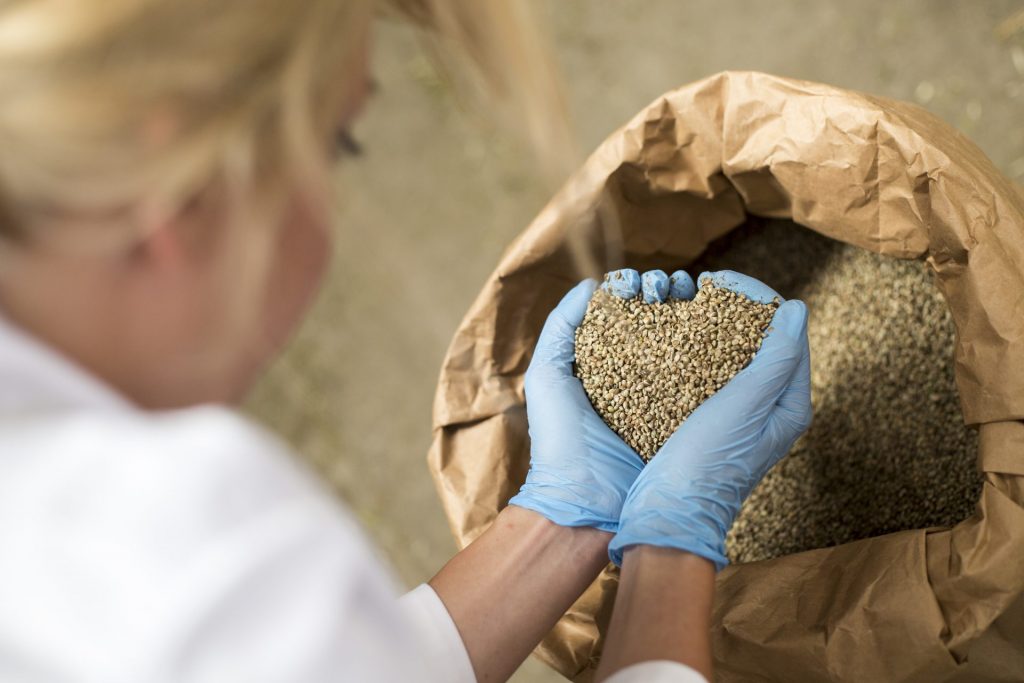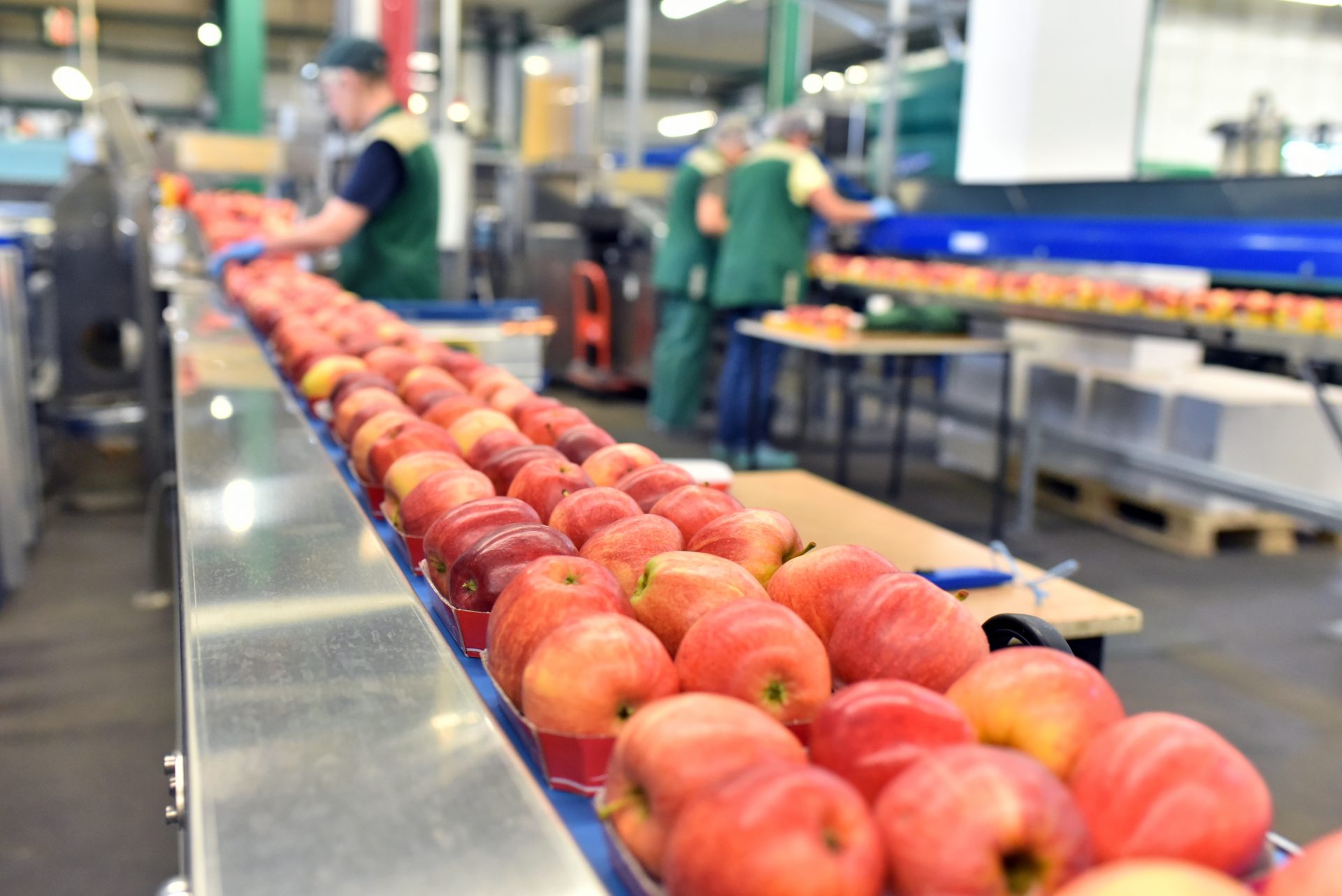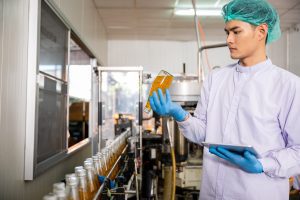The goal of an Environmental Monitoring Program, or EMP, is to reduce food safety risks by testing the food processing environment for harmful bacterial contaminants. Such a program aims to identify pathogen “niches” (harbourage sites) as well as cross-contamination points. It is a critical activity that is used to verify food safety plans, sanitation practices and the facility’s sanitary design (Beno et al., 2016).
As part of an EMP, food and non-food surfaces are swabbed to identify the presence of pathogenic bacteria or indicator organisms. Ingredients, raw materials and finished product can also be directly tested for contaminants. Indicator organisms are used to evaluate the risk of pathogen presence in a facility or in food. Examples of common indicator microorganisms include Total Plate Count (TPC), fecal coliforms or Enterobacteriaceae.
Under the US FDA Preventive control for human food, environmental monitoring is a regulatory requirement applicable to Ready to Eat (RTE) foods exposed to the environment after processing and before packaging. An RTE food is defined as a “food that is normally eaten in its raw state or any other food, including processed food, for which it is reasonably foreseeable that the food will be eaten without further processing that would significantly minimize biological hazards” (21 CFR117.3 Definitions).
As per the US FDA, “peanut butter, soft cheeses, dried dairy products for use in RTE foods, and roasted nuts are among the products for which manufacturing operations would need to have an environmental monitoring program when such foods are exposed to the environment.” The baking and snack industry also embraced the implementation of EMPs back in 2014 when the American Institute of Baking launched an environmental monitoring service. EMP programs are therefore applicable to both low-moisture or high-moisture RTE food processing environments.
Why are EMPs important?
Left unchecked, environmental contamination with pathogens may result in food recalls and outbreaks. These recent incidents were widely publicized:
Lactalis (2017)
French dairy corporation Lactalis recalled 12 million boxes of powdered baby milk after Salmonella Agona sickened 26 infants in France. The contamination was traced back to one dairy facility’s drying towers.
Kelloggs (2018)
Kellogg Co. recalled 1.3 million cases of its Honey Smacks cereal from 30 U.S. states due to the potential for Salmonella contamination. The CDC advised that the product was linked to an outbreak of Salmonella Mbandaka.
Pillsbury (2019)
12,000 cases of wheat flour were recalled as a precautionary measure due to concerns over Salmonella. Although not RTE, the flour could be used to make the raw cookie dough.
Hygienic Zoning and Sampling Locations
Developing a robust EMP (Environmental Monitoring Program) in a food processing facility starts with an in-depth hazard analysis. This determines if sanitation preventive controls are required. The risk assessment must consider the reasonable likelihood that the target pathogen(s) will indeed contaminate the food. Environmental pathogens may be transient or established in the plant. Transient pathogens enter the food processing environment through the receiving and handling of ingredients and raw materials. Routine plant sanitation and sanitization generally address transient pathogens. Resident microorganisms, on the other hand, can survive for extended periods of time — some Listeria and Salmonella strains have been shown to survive for decades in food facilities — and are very difficult to target and eliminate. Due to the formation of biofilms (dense accumulation of microbial cells that adhere to surfaces and become resistant to sanitation chemicals and antimicrobial agents), these microorganisms form colonies that periodically shed bacteria and contaminate food.
The two most common target pathogens of an EMP include Listeria monocytogenes and Salmonella. Listeria monocytogenes is monitored indirectly by way of an indicator organism, Listeria spp. Listeria strains are found in high-moisture and refrigerated environments while Salmonella survives in dry environments but can grow when water is introduced for sanitation purposes.
Once the need for sanitation preventive controls is confirmed, the plant should focus on establishing “hygienic zoning.” The concept of hygienic zoning is to divide a food manufacturing facility into specific areas based on food safety risks. Monitoring the presence or absence of pathogens or indicator microorganisms will reduce the potential for pathogens to enter sensitive areas, specifically high-risk zones where product is exposed to the environment after a kill-step or before packaging.
Hygienic Zones
Zone 1 – Product contact surfaces (processing and packaging surfaces).
Zone 2 – Non-food contact surfaces adjacent to Zone 1 (stairs and overpasses, control panels, equipment legs, metal detectors, hollow pipes and rollers, door gaskets)
Zone 3 – Building structure surfaces/conveyances and equipment located further from zone 2 (forklifts, walls, cooler drains, plant entrances)
Zone 4 – Outside the processing environment (Warehouse, offices, washrooms)
Beno et al. (2016) developed and validated a pathogen environmental monitoring program for small cheese processing facilities. A list of routine Listeria sampling locations by the facility is available here. Samples were taken monthly. An example of a hygienic zoning map is presented below. This fictitious example applies to the manufacturing of an RTE cooked and frozen omelet product. The primary pathogen control area is identified in red and located after the cooking step.
The documented EMP should list the target pathogens or indicator microorganisms, the location of sampling sites, the frequency of sampling and testing, when the samples should be taken, the sampling and analytical methods and the name of the certified laboratory that will perform the testing. Corrective action procedures should also be developed to address any positive test results. Samples may be taken on a daily, weekly or monthly basis, (depending on the risks and the facility’s budget) and should focus on the primary pathogen control area. Samples must be refrigerated and analyzed promptly. Microbiological specifications for surface swabs are given below:
Microbiological Specifications – Environmental Swabbing Program
| Test Type | Target | Maximum |
| Aerobic Plate Count | ≤ 100 cfu/swab | 1000 cfu/swab |
| Total Coliforms | ≤ 10 cfu/swab | 50 cfu/swab |
| Listeria spp. | Negative | Negative |
| Salmonella | Negative | Negative |
Microbiological Specifications – Tools and incoming equipment
| Test Type | Target | Maximum |
| Listeria spp. | Negative | Negative |
| Salmonella | Negative | Negative |
Corrective Actions
Root Cause Analysis (RCA) should be employed immediately to investigate positive test results. Corrective actions should involve sustained investigative sampling to identify the source of contamination. Personnel involved in RCA should aim to “seek and destroy contaminants.” All contaminated surfaces should be thoroughly re-cleaned and sanitized. The sampling regimen should include daily swabs taken during food processing operations and after sanitation activities. An accepted practise is to sample surfaces 3 to 4 hours after the start of production.
Examples of corrective actions when a pathogen is detected:
- Zone 1 test positives: Stop business operations, hold the product until the last good check.
- Increase line sampling and cleaning frequency. Disassemble equipment, clean and inspect parts. Increase plant sanitation activities.
- Resume production when 3 negative test results are obtained (for example, 3 negative test results, daily sampling)
- If reprocessing held product, ensure that the process is validated and results in the manufacturing of a safe product.
Data trending and visualization are important during the RCA process. Positive test result sites should be mapped and data organized in tables and graphed to identify trends. The investigation should also take into account specific events such as equipment repairs, commissioning of new equipment and other incidents (e.g., roof leaks, drainage issues, equipment and process failures, changes in personnel practices) that may have increased the risk of environmental contamination.
Persistent positive results may indicate the presence of a colony (resident strain). In this instance, the facility’s sanitation procedures may no longer be adequate to keep surfaces clean and may present therefore a high food safety risk. The removal of biofilms will necessitate the use of mechanical action (scrubbing or scraping) alongside varying cleaning and sanitizing chemicals. A sanitation specialist may advise on the strength and composition of cleaning and sanitizing chemicals, application temperatures and contact time to achieve the best outcome. Bacteriocides may also help in preventing the adhesion of bacteria onto equipment and structural surfaces.
Get in touch anytime for more information on developing an Environmental Monitoring Program.
References
FSMA Final Rule for Preventive Controls for Human Food
Beno, S. M., Stasiewicz, M. J., Andrus, A. D., Ralyea, R. D., Kent, D. J., Martin, N. H., . . . Boor, K. J. (2016). Development and validation of pathogen environmental monitoring programs for small cheese processing facilities. Journal of Food Protection, 79(12), 2095-2106.
Jones (2017), Environmental Monitoring and FSMA Compliance – Safe Food Alliance (DFA of California)
FSPCA Preventive Controls for Human Food, Instructor Guide, 2016






